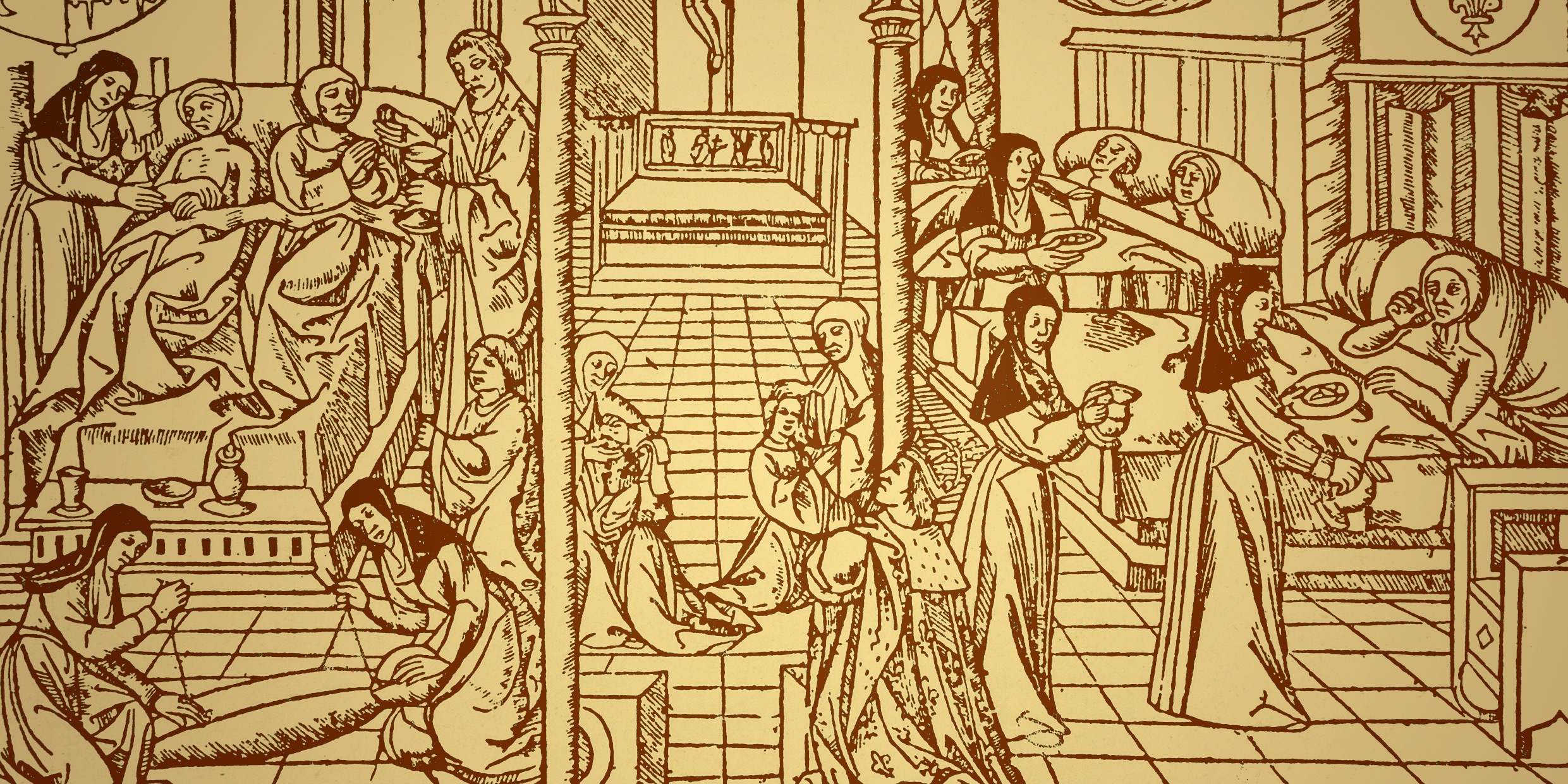Originally published 10 March 1997
My generation of Americans lived in fear of a shibboleth called “socialized medicine.” Our apprehensions were encouraged by the American Medical Association, which sought to protect the professional and financial independence of physicians from governmental intrusions. Any attempt to reform health care was viewed with suspicion.
Now the chickens are coming home to roost. Public proprietorship and influence in our health care system is being subsumed by corporate America. Doctors find their vaunted independence constrained by the god of corporate profit. CEOs and shareholders get rich and the rest of us wonder who’s watching out for the patient’s interest.
As the once solid ground of health care rumbles under our feet, a little history can keep things in perspective. Come with me to one of Europe’s best-known hospitals of 200 years ago, the Hôtel-Dieu in Paris, which claimed to be “the hospital of the kingdom, of Europe, and one might say, of all humanity.”
Even in the 18th century, the Hôtel-Dieu had a venerable history. Tradition has it founded in 650 A.D. Reliable documentation dates from the 9th century. The first enduring buildings went up in 1165. By the 18th century, the hospital occupied a large wedge-shaped block of land on the bank of the Seine, directly in front of Notre Dame cathedral.
In 1777, the hospital catered to the needs of more than 3,600 patients. Over a door of the hospital were inscribed these words: C’est ici la Maison de Dieu, et la Porte du Ciel, “This is the House of God, and the door to heaven.”
The door to heaven, indeed! The death rate at the Hôtel-Dieu was one in four. An English visitor reported seeing patients four or five to a bed, some of them dying. Three patients to a bed was the rule; the middle patient’s head lay between the feet the patients to either side.
Sheets were washed once a month. This work was done by novice nuns, who stood in the polluted waters of the Seine, soaking the sheets, then banging out the crusted soil with a kind of spade.
As described by Grace Goldin, in her illustrated history of hospitals, this method of doing the laundry was as perilous for the sisters as for the patients. They worked at the river for 10 hours a day, beginning at 4 a.m. and ending at 7 p.m., with intervals for prayer and meals. In winter, they had to break the ice, then stand in freezing water. In summer drought they waded into malodorous mud.
The novices’ long woolen skirts presumably never dried out. Only their faith in God and love of humanity sustained them.
There were no connecting corridors within the hospital; all communication from ward to ward led through other wards, between rows of beds. A ward for madmen was adjacent to one for surgical patients. In Goldin’s words, “The howls of the mad took up where the screams of those operated upon left off.” A ward for madwomen was a continuation of a maternity ward.
Air from the smallpox wards on the fourth floor wafted through the cavernous interconnected buildings, through the wards and up and down the drafty stairways.
It was a rule that convalescents must remain in hospital for a week after their recovery. In principle, this was to make certain of the cure, but they were required to spend the time helping in the wards. Their post-recovery probation was as likely as not to put them back in bed.
Physicians and nursing staff at the Hôtel-Dieu served their clientele bravely and unselfishly, but matters of life and death were ultimately in the hands of God. Prayers and processions were a primary regimen for effecting cures. Not much changed in this regard until Florence Nightingale began her hospital reforms in the 19th century, emphasizing separation of wards, cleanliness, and appropriate ventilation.
Nightingale served her apprenticeship in a Hôtel-Dieu-type military hospital in Turkey during the Crimean War. She saw how such hospitals could cause more mortality than did the battlefield — 76 percent in one 6‑month period from disease alone. At a different military hospital, built near the end of the war, with a clean water supply, open ventilation, small isolated wards, and adequate sewage disposal, mortality was only 3 percent.
Nightingale carried the lesson of the military hospitals home. Her influence on health care was quickly felt in Europe and America.
The English writer Lytton Strachey said of Nightingale that she seemed “hardly to distinguish between the Deity and the Drains,” that is, between religious faith and scrupulous elimination of agents of infection. Only when the Drains — scientific medicine — became paramount did hospitals truly enter the modern era.
Nevertheless, the influence of religion remained strong in hospitals, in the caring spirit of the charitable organizations and orders of nursing sisters who remained prominent in hospital administration and operation.
Confidence in the Drains is not threatened by the takeover of publicly-owned and religiously-affiliated hospitals by private health care corporations. Now, however, we have the opportunity to see if capitalism is more or less beneficial to the patient than was the Deity.



